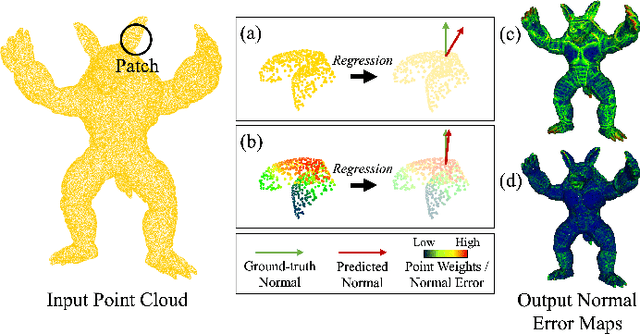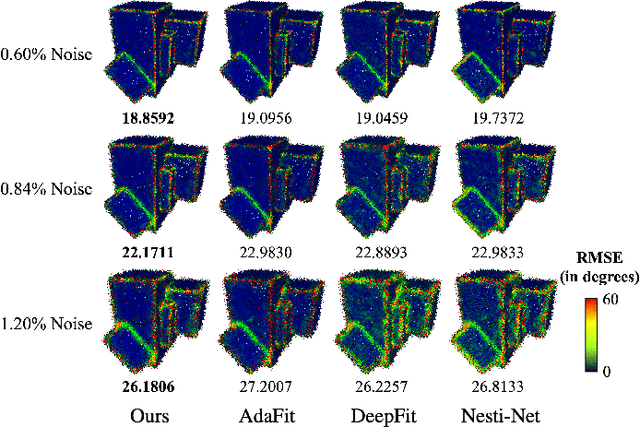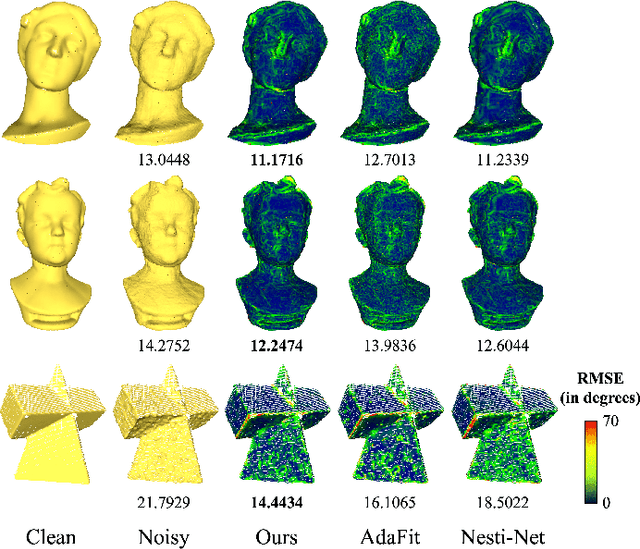Di Shao
Weighted Point Cloud Normal Estimation
May 06, 2023



Abstract:Existing normal estimation methods for point clouds are often less robust to severe noise and complex geometric structures. Also, they usually ignore the contributions of different neighbouring points during normal estimation, which leads to less accurate results. In this paper, we introduce a weighted normal estimation method for 3D point cloud data. We innovate in two key points: 1) we develop a novel weighted normal regression technique that predicts point-wise weights from local point patches and use them for robust, feature-preserving normal regression; 2) we propose to conduct contrastive learning between point patches and the corresponding ground-truth normals of the patches' central points as a pre-training process to facilitate normal regression. Comprehensive experiments demonstrate that our method can robustly handle noisy and complex point clouds, achieving state-of-the-art performance on both synthetic and real-world datasets.
3D Intracranial Aneurysm Classification and Segmentation via Unsupervised Dual-branch Learning
Jan 17, 2022



Abstract:Intracranial aneurysms are common nowadays and how to detect them intelligently is of great significance in digital health. While most existing deep learning research focused on medical images in a supervised way, we introduce an unsupervised method for the detection of intracranial aneurysms based on 3D point cloud data. In particular, our method consists of two stages: unsupervised pre-training and downstream tasks. As for the former, the main idea is to pair each point cloud with its jittered counterpart and maximise their correspondence. Then we design a dual-branch contrastive network with an encoder for each branch and a subsequent common projection head. As for the latter, we design simple networks for supervised classification and segmentation training. Experiments on the public dataset (IntrA) show that our unsupervised method achieves comparable or even better performance than some state-of-the-art supervised techniques, and it is most prominent in the detection of aneurysmal vessels. Experiments on the ModelNet40 also show that our method achieves the accuracy of 90.79\% which outperforms existing state-of-the-art unsupervised models.
 Add to Chrome
Add to Chrome Add to Firefox
Add to Firefox Add to Edge
Add to Edge